#proto-warhol
Text

Enciclopedia delle Arti e Industrie
1885
Color lithographic process using superimposed impressions from four different stones.
489 notes
·
View notes
Text

#nico#1960s#60s#sixties#20th century#vintage#retro#rock#the velvet underground#velvet underground#proto punk#andy warhol
427 notes
·
View notes
Text
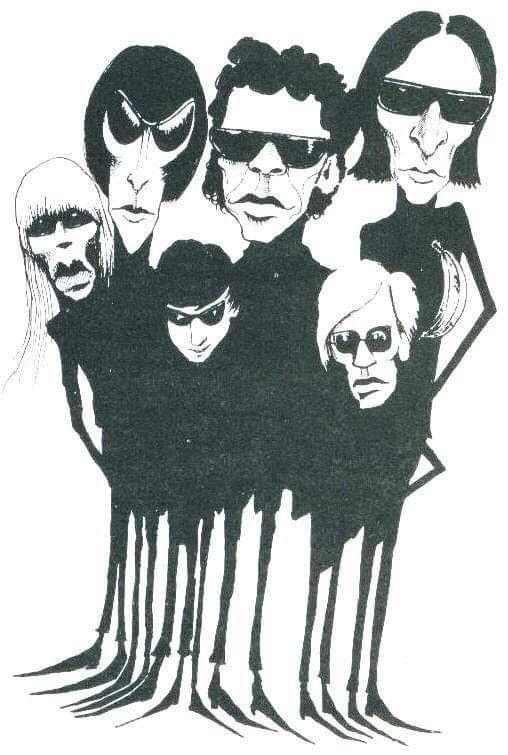
#the velvet underground#nico#andy warhol#anonymous artist#unknown artist#Christa Päffgen#john cale#lou reed#banana#banana 🍌#the velvet underground & nico#sterling morrison#moe tucker#art rock#experimental rock#avant garde#proto punk#late 60s#late 1960s
17 notes
·
View notes
Text

The Velvet underground & Nico - embroidered on a handmade mesh top
See all my mesh tops
#velvet underground#1967#60s#60s icons#1960s#1960s music#lou reed#nico#sterling morrison#john cale#tvu#proto punk#the velvet underground#andy warhol#alternative rock#rock
3 notes
·
View notes
Text
lou reed by andy warhol!










#70s rock#60s rock#classic rock#proto punk#velvet underground#the velvet underground#lou reed#andy warhol
25 notes
·
View notes
Text



"THE ORIGINAL ART ROCK RECORD" -- RELEASED THIS MONTH 57 YEARS AGO.
PIC(S) INFO: The most infamous banana of the entire '60s decade -- Spotlight on sleeve artwork to "The Velvet Underground & Nico," 1967 debut album by American rock band THE VELVET UNDERGROUND.
MINI-OVERVIEW: ""The Velvet Underground & Nico" cover art features an Andy Warhol print of a banana. Original copies of the album had a sticker that could be peeled off of the cover to reveal a peeled banana. Most reissued vinyl editions of the album do not feature the peel-off sticker; original copies of the album with the peel-sticker feature are now rare collector's items."
-- ALBUM ART ORIGINS
Sources: www.picuki.com/media/3133720902994117563 (Picuki 2x) & Wikipedia.
#THE VELVET UNDERGROUND & NICO#THE VELVET UNDEGROUND AND NICO#THE VELVET UNDERGROUND#1967#Album Art#Andy Warhol#Sleeve Art#Sixties#60s#1960s#60s rock#Pop Art#Banana#Experimental rock#Art rock#Avant pop#Avant-pop#Psychedelic rock#Proto punk#Proto-punk#Cover Art#Andy Warhol Banana#Pop Artist#1966
1 note
·
View note
Text
youtube
The Velvet Underground
Ferryboat Bill
from the lp VU
0 notes
Note
Hey is that yellow banana like the yellow submarine from the beatles?

NO how could you say that about The Velvet Underground & Nico, The Velvet Underground’s 1967 debut studio album, pioneering album of the art rock and proto-punk genres, featuring album art by Andy Warhol, widely considered to be one of the GREATEST albums of all time, ranked #13 in the top 20 albums of all time by Rolling Stone.
33 notes
·
View notes
Text

THE FRIDAY PIC is "Brown House," a 1969 painting by the late artist Eleanore Mikus, from her solo show now at Anders Wahlstedt Fine Art. Mikus is best known for the white-on-white, post-AbEx abstractions she made in the early 1960s. They rhyme with works of the same era by Agnes Martin and Chryssa. But her paintings at Wahlstedt come from a body of figurative work Mikus began showing in her 1969 solo at Ivan Karp's OK Harris gallery in New York.
Proto-Neo-Expressionist seems like a good way to describe them, since they so perfectly anticipate the figurative paintings that other, mostly younger, mostly European artists started making a decade or so later. But Mikus was born in 1927, so I have a feeling she's actually revisiting the outsiderish styles of female artists like Doris Lee and Carol Blanchard that played a major role in the American art world of her youth, but that we've almost totally forgotten. (Those styles were also vital to Andy's Warhol's 1950s work, as I discovered in my research on him, and probably to his later "performance" as an outsider, as well.)
I bet Ivan Karp recognized sources in Lee and Blanchard and their ilk, too. Born the year before Mikus, he always had an interest in that tradition, or at least in its vernacular roots.
9 notes
·
View notes
Photo

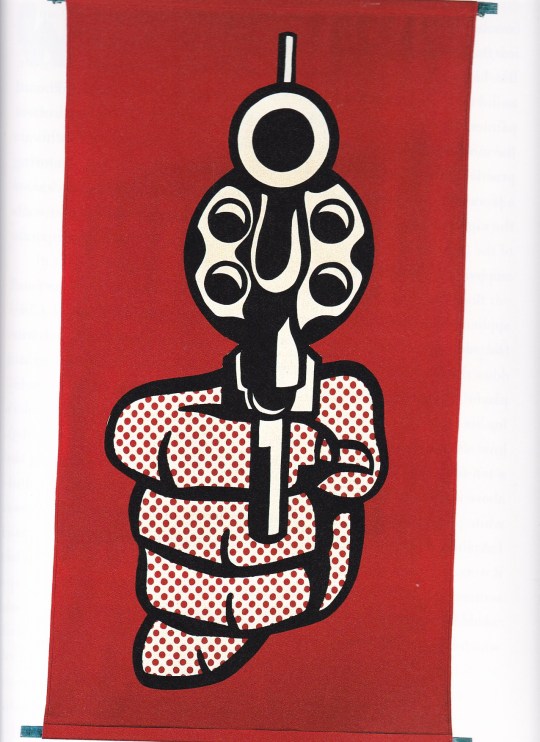

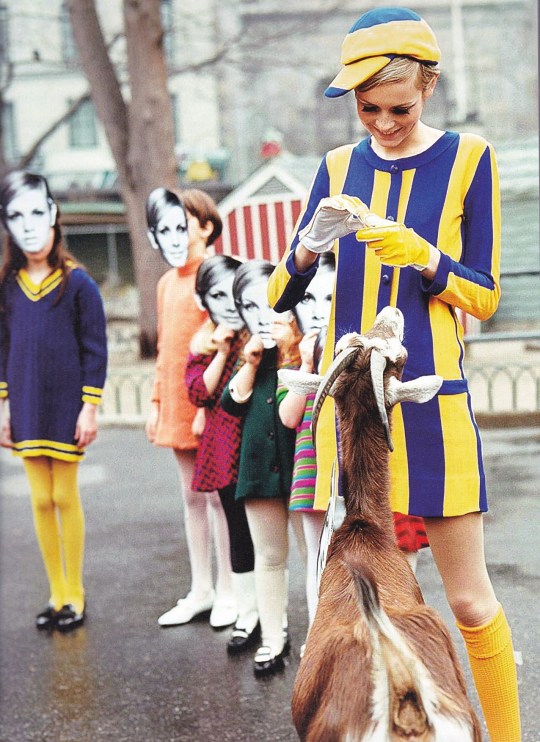



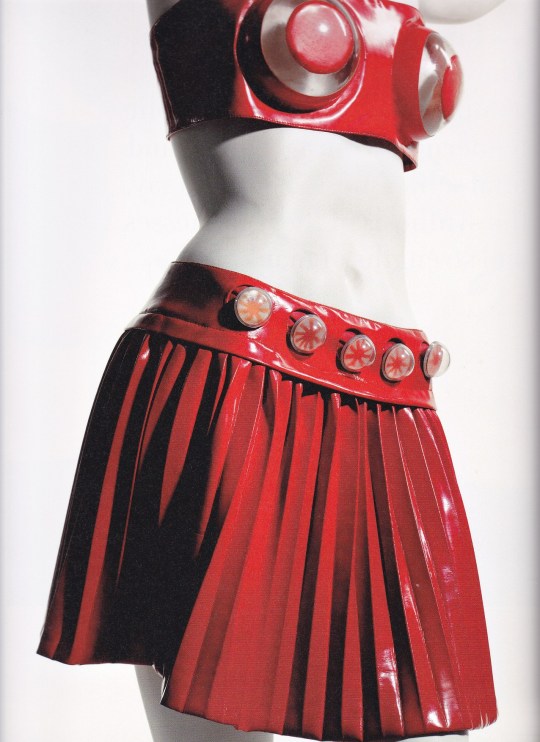

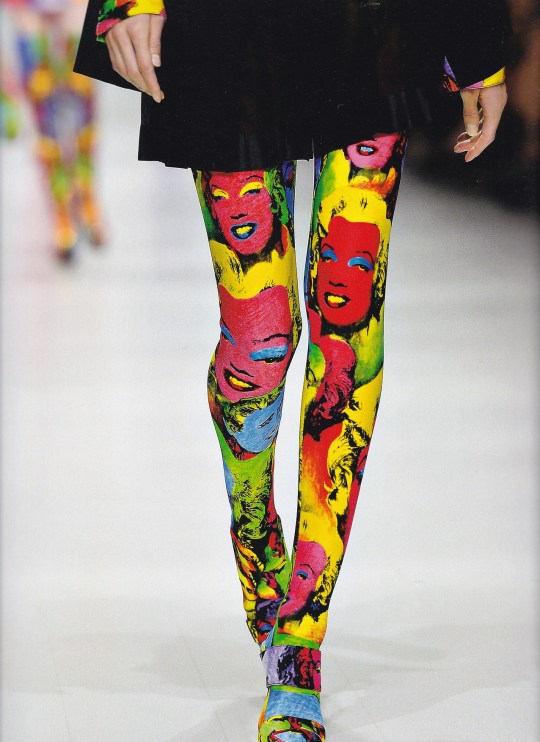
Pop Art Style
Julie Belcove
Assouline, New York 2022, 272 pages, Over 180 illustrations, 25 x 33 cm, Hardcover, ISBN 9781649800732
euro 95,00
email if you want to buy :[email protected]
In the 1950s, a young man from Pittsburgh named Andy Warhol was earning a comfortable living as a commercial illustrator in New York City. But his ambitions went well beyond that; soon he was painting Coca-Cola bottles and filling a gallery with paintings of Campbell’s Soup cans. He certainly wasn’t the first to make a Pop work, but Warhol soon became a brand name himself, synonymous with the new art form that embodied everything youthful, subversive, bright and fresh.From the proto-supermodel Twiggy rocking false eyelashes and a Union Jack dress in Swinging London to Eero Aarnio’s trippy, enveloping Ball chair, Pop seeped into fashion, furniture and product design so profoundly that it is hard to separate the look and vibe of the 1960s and ’70s from the art of the era. No doubt to Warhol’s giddy delight, Pop didn’t just draw from pop culture, it became pop culture.After this first wave, the movement never really went away. Each succeeding generation of artists and designers has revived Pop’s life force while also giving it new direction. Indeed, with Instagram and TikTok on ubiquitous Pop-colored iPhones, social media is to today’s adherents what advertising and Hollywood were to Pop artists sixty years ago.Following our successful Travel series, Assouline introduces the Style series, spotlighting some of the most iconic art movements and design styles, revealing their historical impact and continuing influence on our culture today. This colorful volume brings together dynamic images from diverse eras and media to express the energy and exuberance of sixty years of Pop Art Style.
14/10/22
orders to: [email protected]
ordini a: [email protected]
twitter: @fashionbooksmi
instagram: fashionbooksmilano, designbooksmilano tumblr: fashionbooksmilano, designbooksmilano
#Pop Art Style#Pop Art#Andy Warhol#Swinging London#Twiggy#sixties & seventies#fashion#furniture#product design#fashion books#fashionbooksmilano
26 notes
·
View notes
Text
The Modern Lovers: A Punk Paradox
The scene is set in Cambridge 1971, where a young Jonathan Richman seeks out film student Jerry Harrison to join The Modern Lovers. A city rich in tradition, wealth, and higher education is not exactly where you would think to find these so-called “punk pioneers.” However, Massachusetts suburbia is exactly what inspired Richman’s songwriting.
While the band was said to be born out of Boston, Richman grew up in Natick, Massachusetts, a suburb just outside of the city. Amidst the post-war affluence provided by government funds to American veterans, suburbs began expanding their populations in the 1950s. This socioeconomic shift translated to the increasing cultural desire among families like Richman’s to seek a sense of safety that domestic life seemed to promise. Meanwhile the shipping and manufacturing industries that also upheld Boston’s economy for decades began to collapse in the 1970s, and as families left, young creatives moved in. Richman often alludes to his suburban upbringing in his music, simultaneously idealizing and mocking the nationalist attitudes surrounding suburbia’s mundane nature.
“That shines down on Bolyston Street And I love the USA … We'll share a modern love Under suburban rain. And me in love with the USA now. And me in love with the modern world now … Well, out on route nine Well, it's bleak and nearly dying … With me in love with the USA now”
Richman looked to escape to the city as often as he could with nothing but the local radio and a $10 guitar at home tying him to an emerging punk subculture. Richman was later drawn to clubs like The Boston Tea Party at the age of 16, where he first witnessed Andy Warhol and the Velvet Underground. Obsessed with their sound, Richman eventually moved to Manhattan for 10 months to follow Warhol the band until he found his way back to Boston to start his own. Noted as his greatest inspiration for The Modern Lovers, Richman even admits to copying The Velvet Underground along with other proto-punk and classic rock bands such as The Stooges, The Rolling Stones, and The Who.
In 1971, Richman had formed The Modern Lovers with Jerry Harrison on keys, Ernie Brooks on bass and David Robinson on drums. Inspired by the work of Lou Reed and Iggy Pop, Richman was said to have a produced a new philosophy of music for his bandmates, dependent on being confrontational with the audience and creating a sound based on the feeling they put into their music, rather than technique: “I knew I couldn't sing or play like the other guys but I didn't want to. I figured I had feeling and that was enough. I knew I was honest” (Maloney 2017).
Richman had a revolving door of members join him in The Modern Lovers as his sound and performance style evolved. Former keyboard player Jerry Harrison notes that despite his initial obsession with The Velvet Underground, Richman had a distaste for the dark energy that a lot of proto-punk bands radiated. Richman sympathized with the anti-war movement and the Cambridge Mayor’s war on hippies and began drifting from the original proto-punk sound of harsh guitars and punchy drums to softer rock.
By 1974, The Modern Lovers as known with Richman, Jerry Harrison, Ernie Brooks, and David Robinson had broken up. John Cale would later release their original demo collection in 1976 as a debut album after Richman already revived the band with all new members. The “Roadrunner” demo became revered within the punk scene, covered by icons like Joan Jett and the Sex Pistols.

The hit contained the combined inspiration of proto-punk sound and simple joys found in his monotonous suburban upbringing. The two-chord, upbeat, minimalist piece acts as an ode to driving through Massachusetts as both an appreciation and an escape. Richman’s balance between his two worlds of proto-punk influences with promotions of peaceful lightness creates a paradox – despite The Modern Lovers’ renowned influence on the punk subculture, their front man never fully encapsulates the rebellious or often ugly nature of the scene that musicians such as Iggy Pop or Darby Crash embodied. Their keyboard and bass players graduated from Harvard. Richman wrote a song about being anti-drug in the peak age of psychedelics (“I’m Straight”). Their lyrics while liberating were never crude. It seems the only essence of “live fast, die young” resides in the band’s revolving door of members, most only lasting a few years.
The Modern Lovers’ punk image was cultivated out of an almost evolving pureness from Jonathan Richman. He follows the punk ethos of protest lyricism, unique sound stemming from a lack of instrumental technique, punk inspirations and a desire to escape conservative suburbia. Yet as he becomes older, he begins to deny the darkness he associated with acts like The Velvet Underground. This paradox is what sets them apart from their punk counterparts. While the original band was short-lived, this contrast set The Modern Lovers up for a long-lasting legacy.
2 notes
·
View notes
Text
The Velvet Underground and Nico - The Velvet Underground, Nico(1967 Review)

What can I say about the Velvet Underground and Nico that hasn't been said already? Despite not selling well initially, this album overtime became a main influence for various styles of music to follow; there's an old saying that "Whoever bought their album went out and start a band" and for good reason. The Velvet Underground was doing stuff that was unheard of in the music world at the time in the 1967. How experimental is this album you ask? Well diving into the album and it's song it becomes much clearer.
The album starts off strong with two songs, Sunday Morning and I'm Waiting For The Man; how different those tracks are may throw the listener off guard. Listeners in 1967 might've been surprised at the brash experimentation of I'm Waiting For my Man, and modern listeners probably won't get how this band is experimental right off the bat. Why it was like this is because Tom Wilson, who was one of the producers of this album, wanted another potential successful single off the album with Nico providing lead vocals, but Nico ended up providing backup instead and Lou Reed took up the lead duties. This song about paranoia is also the only song on the album that has more professional sounding production than the rest of the album. If this never happened then the album would've jumped right into I'm Waiting for the Man: a proto-punk song also fronted by Lou Reed that tells the story of his Heroin purchasing from a certain drug dealer. Keep Heroin in mind as we continue. The lyrics of the song also hint at Reed's homosexuality with lines in the Second Verse Such as, "Hey White Boy, you chasing' our women around? Oh, pardon me, sir, it's furthest from my mind.", which in itself can also mean that Reed's objective is to buy smack, which can cause Men to have a lack of sexual interest when high. The next track is Femme Fatale, the first Nico fronted song on the album that has a more laid back pop sound in the same vain as, but not as lush and dreamy, as Sunday Morning. The Lyrics tell the story of Edie Sedgwick, an infamous Warhol Star who had an enchanting allure to her seductive nature, which was only climaxed by her death of a drug overdose at 28 years old.
Track 4, Venus in Furs, is a droning song that could almost be proto-gothic rock. The Droning nature of the song comes from what's called Ostrich Tunning, where Lou Reed tuned all of his strings to E. The Lyrics however, get much darker and deeper. This song and the title is based on 1870 novella of the same name by author Leopold von Sacher-Masoch. Both the Song and Novella talk about topics relating to sexual masochism, the song especially celebrating it out in the open, which was a bold move and thus challenged conventions at the time about songwriting. Track 5, Run Run Run, is an electric folk song that tells a tale about how four characters are seeking or engaging in acts of drug use. Teenage Mary sells her soul to try and be saved but still gets invested in drug use anyway. Margret Passion experiences a series of withdrawals as a drug addict stops using their drugs for a longer period of time. Seasick Sarah cocaine dealt and overdosed, and Beardless Harry is a trans male(hence his name),who's life ends after he couldn't get a single hit. Track 6, All Tomorrow's Parties, a 7 minute droning song that's the second song on this album that's fronted by Nico. This song tells about a nursery rhyme character named Thursday's Child, from the story Monday's Child. They are described as having "far to go", meaning she is a lost soul and before being happy she has much to encounter. This also ends Side 1.
Side 2 begins with Track 7, another proto-punk tune, once again about Heroin, Lou Reed describes the effects of the titular drug, with each verse getting more energetic as they progress, culminating to the end when the energy builds up so much it's the equivalent of an overdose. Track 8, There She Goes Again, is one of the more typical 60s Garage Rock sounding songs of the album, with the song describing a prostitute who is steadfast in her profession. Track 9, I'll Be Your Mirror, is the third and final track Nico appears on; it's also the shortest track on the album at just above two minutes long. This song is about a person who sees the beauty possessed by a loved one and wishes to share that beauty with them. Fun Fact this song was not written for Nico originally, Lou Reed wrote it before they even met, but Warhol requested Nico to sing it on the record and Lou Reed reluctantly allowed her.
Track 10, The Black Angel's Death, is the only track on the album where I don't think is perfect, but it almost is. This is a song that has more meaning in the context of other songs on the album, as this is another song that signifies that Lou Reed presents topics such as Drugs and Prostitution in a matter of fact way. One thing about this song that's upfront is the viola shrills done by John Cale, especially in the song's outro. The band would often play this song live much MUCH longer then what we hear on the record, however it wasn't a favorite at clubs. One time, when the band was told by a manager to not play the song again, they responded by playing it anyway with a "furious vengeance", the band were sacked anyway- I guess it was worth it. And the final track, track 11, European Son, really puts the Avant-Garde into the Avant-Garde of this album. This song is dedicated to Delmore Schwartz, who was Reed's teacher at Syracuse University. Apparently Delmore despised songs with words, especially rock and roll lyrics, so this big instrumental closer was dedicated to him. The sounds of this musique concrete composition were meticulously rehearsed, paying close attention to detail, with sounds ranging from Lou Reed scrapping a chair across the floor to John Cale smashing a pile of aluminum dishes. Ending the album
To say this album changed everything would be an understatement. This album is pretty much the ground zero for any alternative, experimental or indie genre to come after. Punk, dream pop, jangle, noise rock, post punk, the list goes on. The musician ship on this album as well as the lyrics and song topics on this album were unheard of in 1967. Basically put, if this album or band never happened, what would modern music be like today?
10
Listen to the album here
#music#album#music album#studio album#album review#review#music review#1960s#60s#60s music#60s rock#psychedelic rock#the velvet underground#lou reed#nico
0 notes
Photo

#andy warhol#warhol#pop art#polaroid#70s#70s art#70s pop#vintage#vintage art#1970s#1970s photography#70s photography#protopunk#proto punk#the silver factory#avant-garde#pop#60s pop#the velvet underground#velvet underground#lou reed#nico#Edie Sedgwick#gerard malanga#truman capote#david crosby#the doors#Jim morrison#counter culture#beatniks
224 notes
·
View notes
Audio

The Velvet Underground - "I'm Waiting for the Man" (1967)
Lou Reed
from:
"The Velvet Underground & Nico" (LP | Disc 1)
"I'm Waiting for the Man" / "There She Goes Again"
(1971 German 7")
Garage | Proto-Punk
JukeHostUK
(left click = play)
(320kbps)
Personnel:
Lou Reed: Vocals
Sterling Morrison: Guitar
John Cale: Piano / Bass Guitar
Maureen Tucker: Drums / Tambourine
Tom Wilson: Post-Production Supervisor
Produced by Andy Warhol
Recorded:
@ The TTG Studios
in Hollywood, California USA
during May of 1966
Album Released:
on March 12, 1967
Verve Records (LP)
MGM (German Single)
#161 on Rolling Stone's 500 Greatest Songs of All Time (2010 edition):
"... a proto-punk classic steeped in New York grit."
"One of the all-time classic rock songs ."
- Dave Thompson, AllMusicCom
#Proto-Punk#The Velvet Underground#Lou Reed#Verve Records#1960's#Sterling Morrison#Moe Tucker#John Cale#I'm Waiting for the Man#Tom Wilson#Andy Warhol#The Velvet Underground & Nico#1966
31 notes
·
View notes
Text

John Cale, Lou Reed & Andy Warhol at The Ocean Club, NYC, 1976 - Photo by Bob Gruen
#john cale#lou reed#andy warhol#bob gruen#the velvet underground#1970s#classic rock#punk rock#rock and roll#70s aesthetic#proto punk#70s music#exapirmental rock#70s rock#art rock#70s punk
162 notes
·
View notes
Text






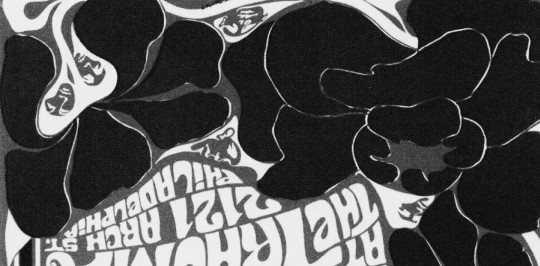

The velvet underground Posters
167 notes
·
View notes